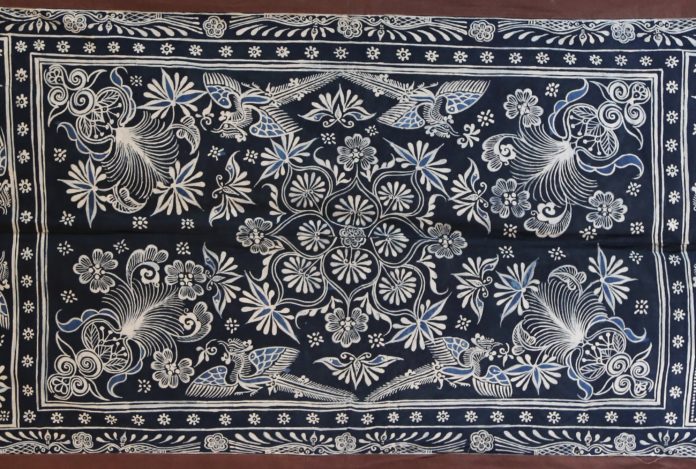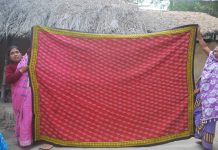Batik is a time-honored traditional folk handicraft art of textile printing & dyeing prevailed among the minority ethnic groups in China. It originated in Yunnan and Guizhou. It is a wax printing process consisting of the following steps: painting patterns on a cloth with a wax spatula dipped with melted wax, then dip dyeing it with indigo, removing the wax after dip dyeing, and waiting until various white patterns with blue background or blue patterns with white background appear on the fabric surface. During the dip dyeing, the wax, as a dye resisting agent, naturally cracks, leaving special “ice crack” patterns on the fabric surface. Batik applies a diversity of patterns, mostly the birds, beasts, flowers, grasses, geometrical patterns and traditional dermatoglyphic patterns. These patterns are characterized by quiet and unadorned colors, unique styles, and fresh and pleasing looks as well as distinctive ethnic characteristics. Fuel feedstocks used during the dyeing are local plants.
Batik remains very popular today among Bouyei, Miao, Yao, and Gelao ethnic groups, who mostly prefer batik-printed garments, dresses, quilts, blankets and flat sheets. Meanwhile, batik is more often protected and inherited as a carrier of the culture of these minority ethnic groups.
Even today, there are still a large number of ethnic minority people engaged in this technique in Yunnan, Guizhou, western Hunan and many other places in China. Jiao Baolin, a master of Chinese arts and crafts from Jiangsu Province, is a rare high-achiever in the field of contemporary tie-dyeing. He paints using tie-dyeing techniques, elevating this practical folk technology to the height of artistic appreciation.





